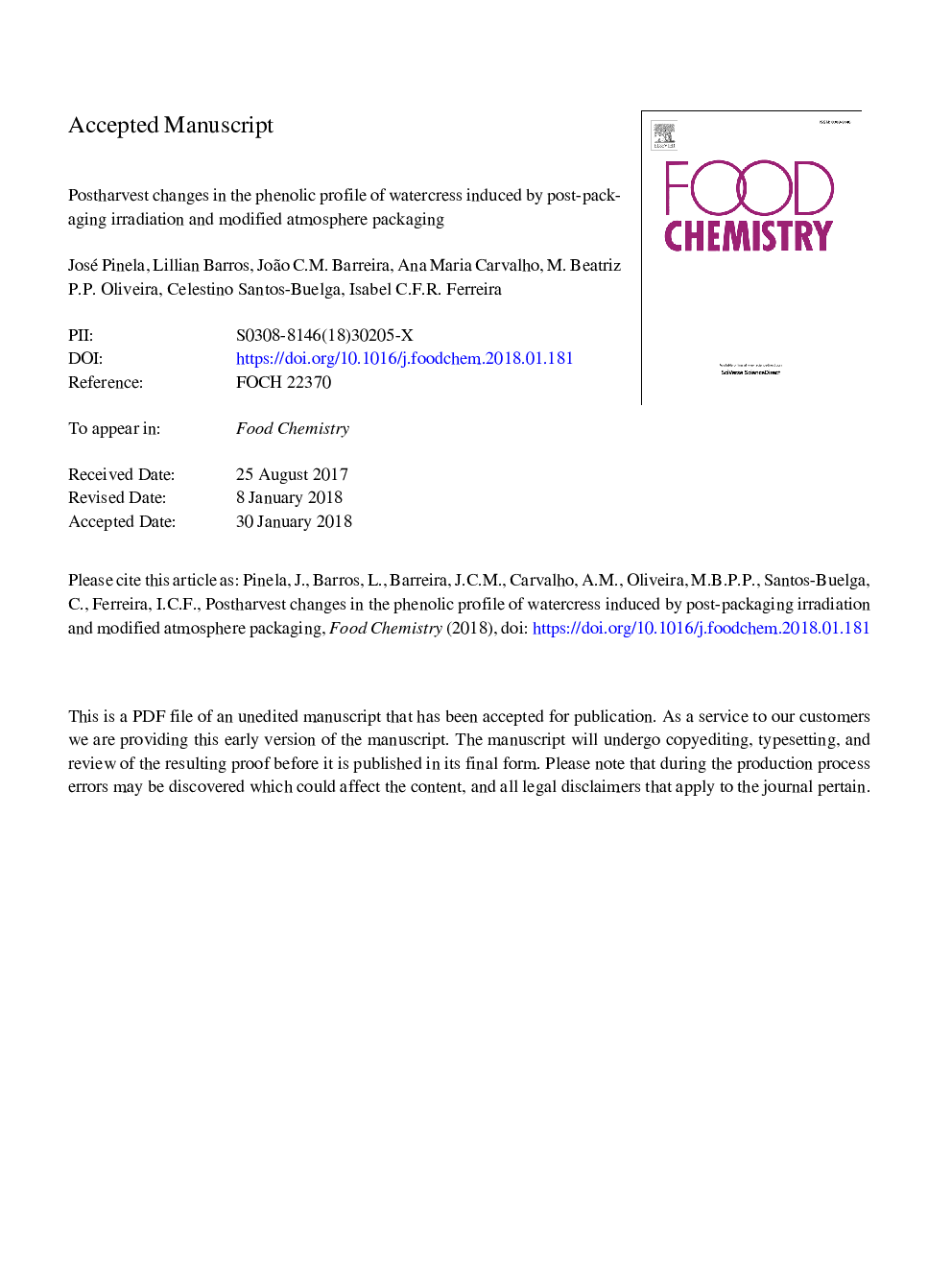| Article ID | Journal | Published Year | Pages | File Type |
|---|---|---|---|---|
| 7585419 | Food Chemistry | 2018 | 29 Pages |
Abstract
The effects of γ-ray irradiation and modified atmosphere packaging (MAP) on watercress (Nasturtium officinale R. Br.) phenolic compounds were evaluated after 7-day storage at 4â¯Â°C. Irradiation doses of 1, 2 and 5â¯kGy were tested, as well as vacuum-packaging and MAP enriched with 100% N2 and Ar. A non-irradiated, air-packaged control was included in all experiments. p-Coumaric acid was the most abundant compound in fresh watercress, followed by quercetin-3-O-sophoroside and isorhamnetin-O-hydroxyferuloylhexoside-O-hexoside. Four kaempferol glycoside derivatives were identified for the first time in this species. In general, flavonoids predominated over phenolic acids. Samples stored under vacuum and irradiated at 2â¯kGy revealed lower phenolic levels. Ar-enriched MAP and control conditions preserved the initial phenolic content. The 5â¯kGy dose also maintained concentrations of flavonoids and total phenolic compounds, but increased the phenolic acids content. Additionally, flavonoids were found strongly correlated to DPPH scavenging activity and β-carotene bleaching inhibition capacity.
Keywords
Related Topics
Physical Sciences and Engineering
Chemistry
Analytical Chemistry
Authors
José Pinela, Lillian Barros, João C.M. Barreira, Ana Maria Carvalho, M. Beatriz P.P. Oliveira, Celestino Santos-Buelga, Isabel C.F.R. Ferreira,
